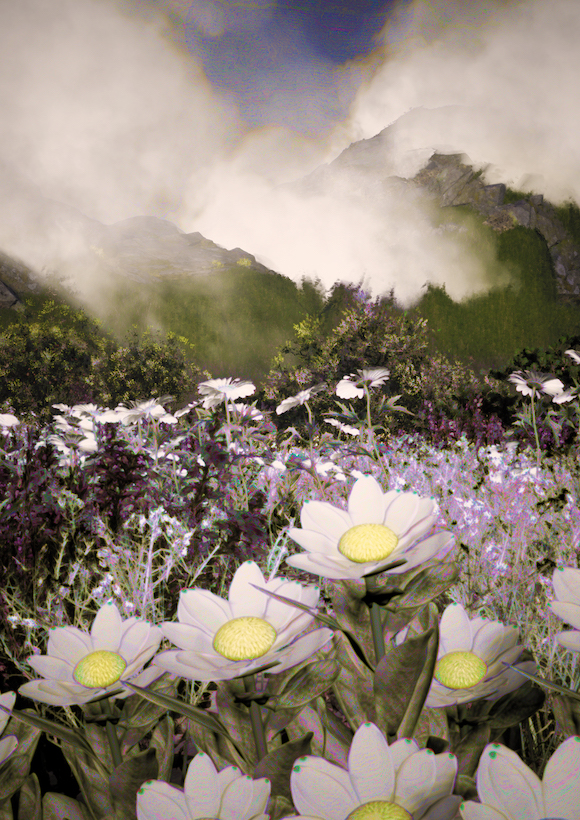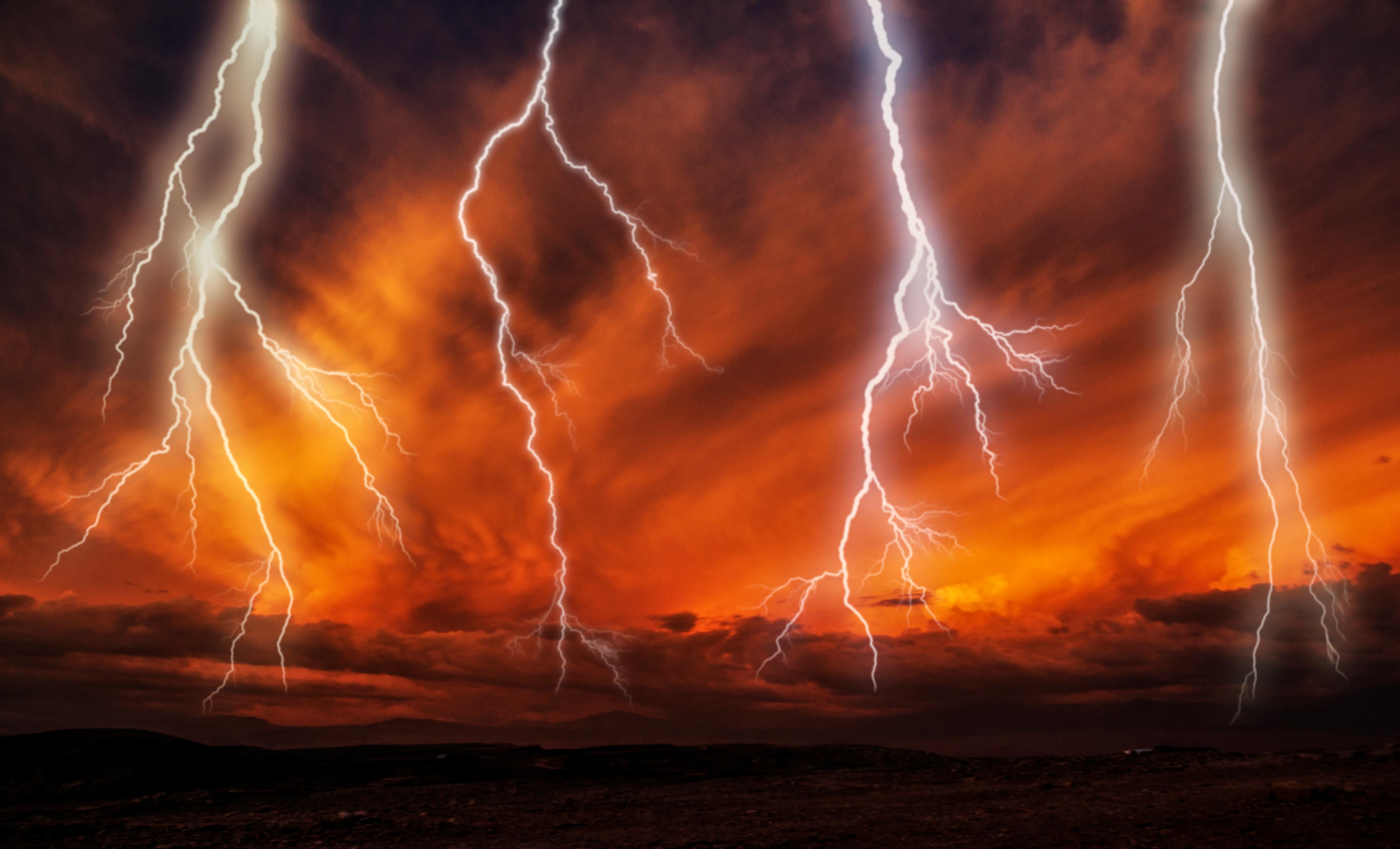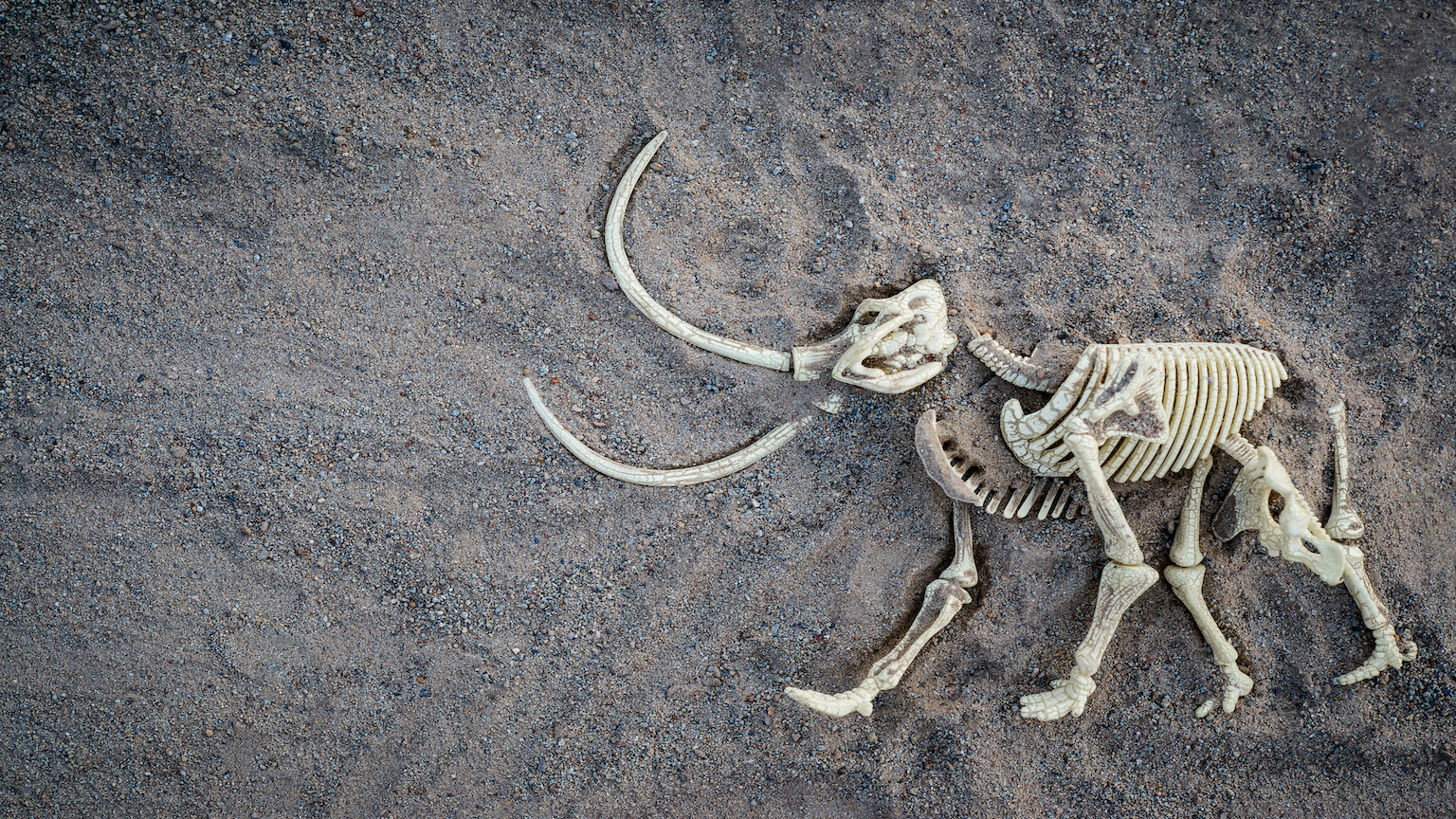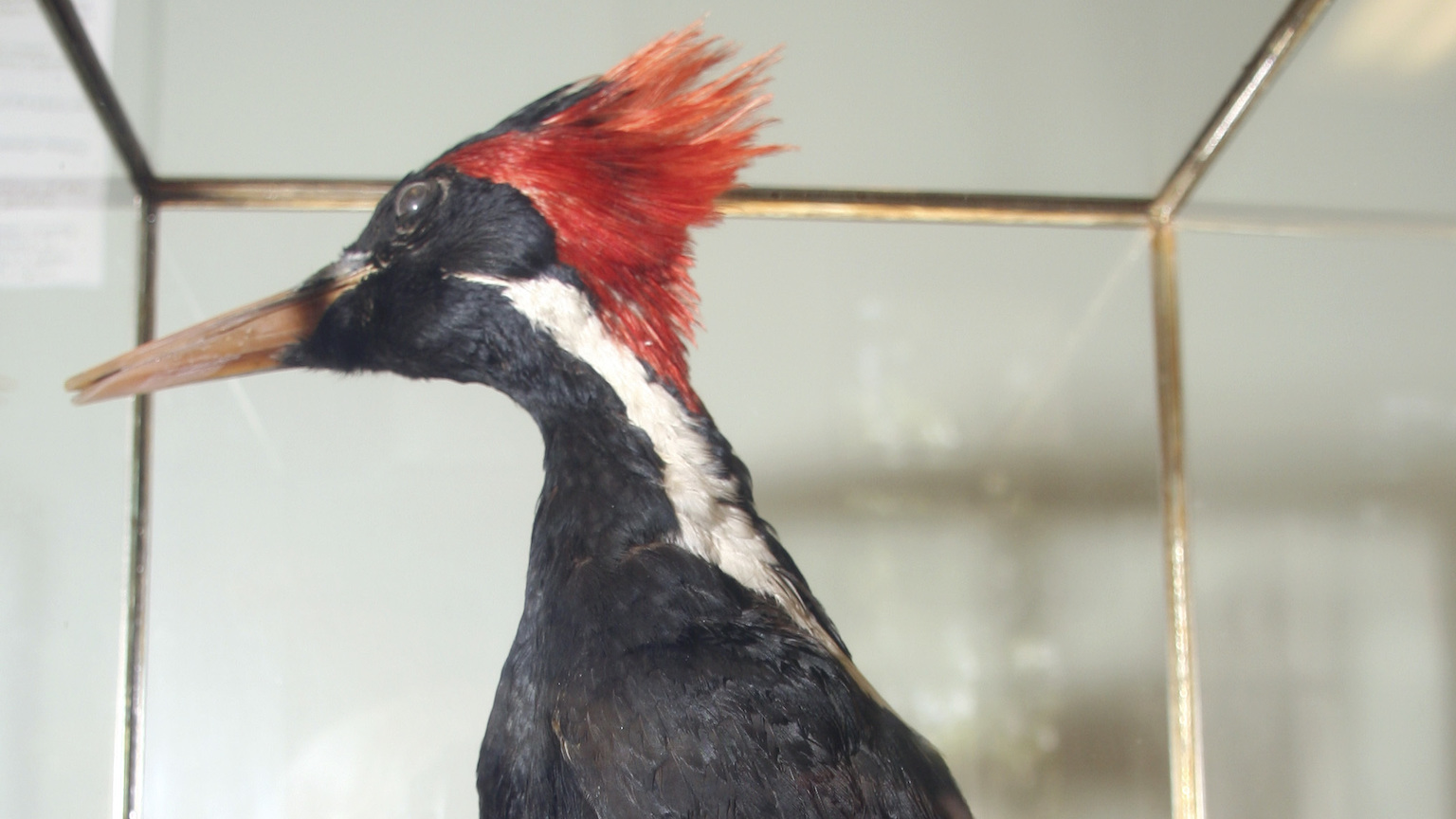How scientists and artists resurrected the scents of extinct flowers

- This essay tells the story of Resurrecting the Sublime, a project that aimed to recreate the scents of extinct flowers.
- To recreate the lost scents, which were featured in immersive art installations, artists Alexandra Daisy Ginsberg, Sissel Tolaas, and Christina Agapakis teamed up with researchers at Ginkgo Bioworks, a Boston-based biotechnology company.
- The resurrected scents — which weren’t exact replicas — were intended to provoke feelings of the sublime, or the “expression of the unknowable.”
The following is an essay titled Resurrecting the Sublime, which was featured in Nature Remade: Engineering Life, Envisioning Worlds, published by University of Chicago Press in 2020. This excerpt was published with permission from the author.
Leafing through folders of pressed plant specimens at Harvard University’s herbaria, synthetic biologists Christina Agapakis and Dawn Thompson were hunting flowers that no longer exist. As they cross-referenced a print-out of The IUCN Red List of modern plant extinctions against cursive names inked on yellowing labels, they found twenty species from which they cut tiny tissue samples (fig. 14.1).
Three would still contain enough DNA to allow humans to once again experience the smell of their lost flowers. These were diffused in the artwork Resurrecting the Sublime (2019), in collaboration with artist Alexandra Daisy Ginsberg and smell researcher and artist Sissel Tolaas.
Those three flowers, endemic to Hawaii, Kentucky, and South Africa respectively, shared a particular trait. Each was extinguished by colonial action: human destruction of its habitat. In 1912, just two years after the indigenous Maui hau kuahiwi was first spotted and named Hibiscadelphus wilderianus Rock by Austrian-American botanist Joseph F. Rock, the only such tree was found in a dying state. Colonial cattle ranches had decimated its native dry forests on ancient lava fields on the southern slopes of Mount Haleakalā, on the island of Maui, Hawaii (fig. 14.2).
Four thousand miles away and a decade later, the construction of US Dam No. 41 on the Ohio River at Louisville, Kentucky, cemented the disappearance of the delicate Falls-of-the-Ohio Scurfpea, or Orbexilum stipulatum (fig. 14.3).
First collected in 1835, the purple flower was last seen in 1881 in its only known locale, the Devonian limestone outcrop of Rock Island, situated at the river’s bend. The reason for its loss is unknown; perhaps reducing buffalo populations impacted other species. But when the dam flooded the channel in the 1920s, the island itself was erased (fig. 14.4). Eight thousand miles away on the southern tip of Africa, eighteenth-century colonial vineyard expansion had already transformed granitic Wynberg Hill in the shadow of Table Mountain (fig. 14.5).





This was the home of the protea “Leucadendron grandiflorum (Salisb.) R. Br.,” or Wynberg Conebush. At the turn of the nineteenth century, the botanist Robert Salisbury noted the flower’s “strong and disagreeable smell” (fig. 14.6).
However, he had encountered the flower not in Cape Town, but in a collector’s garden in London, its extirpation in the wild already likely. Indeed, this flower has a more complex history as the Harvard flower is a cultivated specimen from the 1960s, and thus may be incorrectly labeled: no true sample may exist anywhere (a matter that we are researching) (fig. 14.7).
Only Salisbury’s record may prove it ever lived. That three otherwise insignificant organisms in the history of biology happened to be seen, collected, and named by Western botanists before they disappeared is a reminder of the contingency of biological existence, as well as the Western scientific urge to catalog life to confirm that very existence.
Capital helped extinguish these flowers and now capital is required to bring them back. Agapakis and Thompson’s scouring of Harvard’s archives was the start of a collaboration between synthetic biologists and artists that raises questions about our relationship with nature, and about conservation, colonization, and the complicated role of technology and capital as it intersects these areas. This short, illustrated essay describes our process and highlights some of the issues raised by an artwork intended as a provocation for reflection on, not as a solution to, our treatment of the natural world.
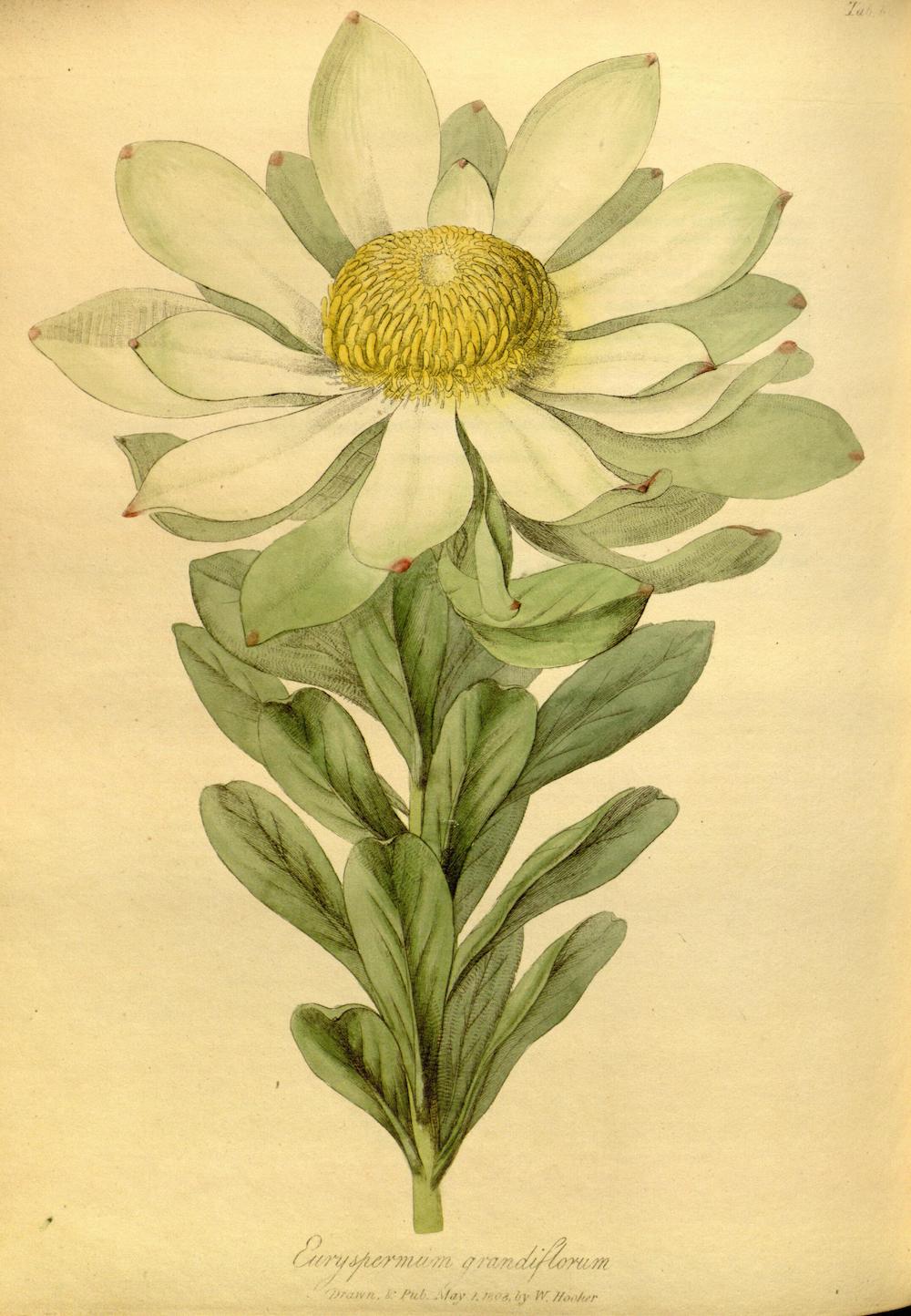

Agapakis is the creative director of Ginkgo Bioworks, a Boston-based biotechnology company founded in 2009. In its gleaming, robot-assisted “foundries,” Ginkgo scientists engineer yeast and bacteria to secrete useful chemicals for humans, from pharmaceuticals to fuel to flavors. Since Ginkgo also produces smell molecules for fragrance companies, divining lost smell molecules from crumbled sections of DNA could potentially be rewarding technically, intellectually, as well as commercially. The project began in 2014 as an internal research project, which Agapakis took up, intrigued to see if it was scientifically possible.
Revealing the flowers’ smells from the information encoded in their DNA first required help from paleogenomics experts at the University of California at Santa Cruz, who could extract DNA from the degraded historic samples. Ginkgo’s scientists and engineers then analyzed the fragments to predict gene sequences that might encode fragrance-producing enzymes. They compared the DNA with known sequences from other organisms and filled in any gaps using the template genes (fig. 14.8).
This became a large and expensive experiment: some two thousand predicted gene variants were synthesized (the DNA printed) and inserted into yeast, then the yeast were cultured to produce smell molecules and to test what each variant produced. Finally, the team used mass spectrometry to verify the identity of each of the secreted molecules. From the resulting list of smell molecules, in 2018 Tolaas could begin to reconstruct the smell of the three lost flowers in her Berlin laboratory, using identical smell molecules or comparative ones for those that were not commercially available (fig. 14.9).
But while bioengineering can tell us which molecules the plants produced, their quantities—like the flowers—are also lost. The flowers’ true smell remains unknowable. This contingency disturbs the solutionist narrative of engineering life: synthetic biologists seek to “build life to understand it,” to be able to control it. But here, we cannot know. Rather than producing a sense of control, using genetic engineering to try to resurrect the smell of extinct flowers—so that humans may again experience something we destroyed—is both romantic and terrifying. This dizzying feeling evokes the sublime, an idea that has preoccupied Western artists and thinkers for centuries. The sublime is an “expression of the unknowable,” an aesthetic state reached through exposure to nature and its immensity, encouraging contemplation of humankind’s position in it. Artists tried to represent this sensation in nineteenth-century landscape paintings; synthetic renderings that captured the violent creativity of nature. Ginkgo’s technological feat reverses the “natural order” of time to glimpse a nature that is lost, but like these paintings, even the most advanced biotechnologies can give only an incomplete representation.

Invoking the sublime also connects this work to a changing understanding of the sublime itself: from eighteenth-century efforts to manufacture sublime experiences in audiences (such as the spectacular West End theatre sets of Philippe de Loutherbourg), to analysis of the sublime’s role in colonial identity-building in the nineteenth century (evident in the Edenic paintings of Frederick Church), to the twentieth century technological sublime of engineered infrastructure, and finally to the sublime’s postmodern shift from transcendence to immanence, yet knowingly a constructed experience or illusion.
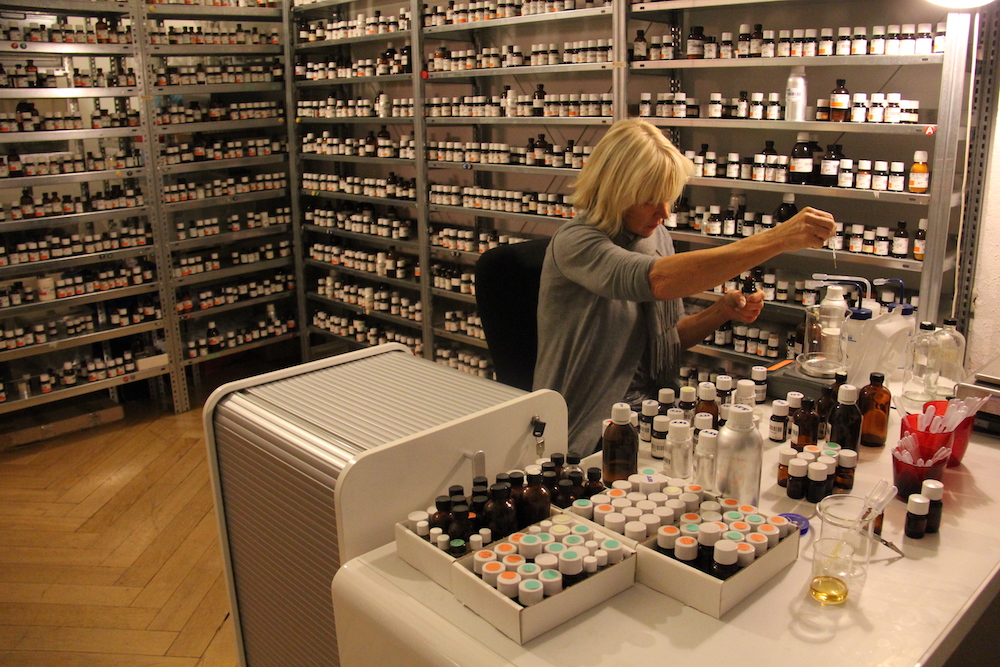
Acknowledging both the idea of the sublime and this history of its reconstruction, Ginsberg wanted museum visitors to enjoy the total artifice of a “resurrected” smell experienced in a simulated landscape. With her studio team, she designed a series of immersive installations. In the largest version, visitors step inside glazed vitrines, recasting the natural history museum display case as a space for contemplation (fig. 14.10).
Inside each, Tolaas breaks down a lost flower’s reconstructed smell into four parts, which are individually diffused from the ceiling. The fragments mix around the visitor, replicating the contingency of biology: there is no one exact smell, since every inhalation is subtly different. A landscape of boulders matched to the geology of the flower’s lost habitat completes the diorama of a minimal nature. An ambient soundtrack evokes the lost landscape filled again with buzzing insects and plants in the wind, underpinned by a low frequency rumble that resonates in the gut. As they stand and smell the lost flower in this abstracted environment, the visitor becomes the subject of the nature display. They are no longer just an observer, but part of an observed nature, watched by others looking in (fig. 14.11). The physical experience induces a connection to otherwise obscure flowers, long ago extinguished in distant places by the actions of earlier colonizers.

This is biotechnology used to engineer a feeling of loss, not to construct a solution. We are not offering de-extinction, but using immersive installations to give a glimpse of a flower blooming in the shadow of a mountain, on a forested volcanic slope, or a wild riverbank; each an interplay of a species and a place that no longer exists (figs. 14.12–14.14).
Is this the reversal of the sublime: the total human domination of nature through the engineering of life? Or does such loss remind us of biology’s ambivalence in the face of human efforts to remake nature?



